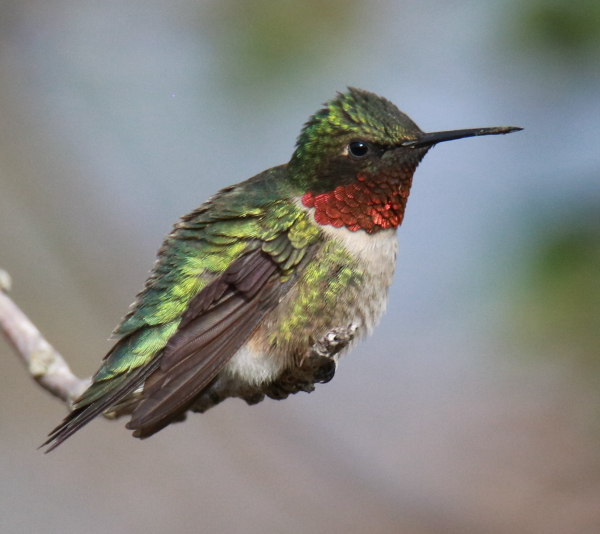How to Photograph Birds in Your Yard


The first Black-headed Grosbeak I’ve seen in the state visited my feeder, making this an important documentary image for me, but it also features the clean feeder with ample foods available. To have new representatives of east and west grosbeak species during the same week was exciting, and the images were better in quality than most documentary photos.




Feeding birds can be especially exciting when a new bird arrives, especially one that is a bit beyond its normal range. But that’s when you really need to take your feeding station and landscaping experiences to a new level: To photograph birds that visit your feeders. If you are already photographing birds at your feeding station, good job; if not, you really should give it a try, because it can open a whole new way of enjoying your birding activities at home! Taking just one fine photograph of birds at a feeder or birdbath can be personally rewarding and you can share that creative photograph with others via text, email, or by giving a printed picture – maybe even a framed photo.
It’s nice to include a feeder or birdbath in photographs of birds at your feeding station. When you feed birds, your feeders are part of the excitement you experience and really should be a part of some photos. Realistically, many birds that we see our yards, including the rarer birders, probably wouldn’t visit if it wasn’t for the foods and water we provide. But I also try to photograph birds next to the feeders, when they are perched on adjacent branches, a tree trunk, or on the ground. In fact, you can install a natural perch near your feeding station to get another photo option.
Photographing at our feeders is an added incentive to keep our feeders clean and filled when photographing. It’s also an incentive to keep your windows clean (ha-ha). The question of whether to photograph through the glass of a window is something of a concern; that is, a glass window will probably reduce the quality of the resulting images. But often, the reason for taking a photo of a bird at your feeders is because it’s a bird you haven’t seen before that you want to document, so you take the photos and worry about their quality after the fact. That’s part of the fun and excitement, when a bird appears that makes you to grab your camera and take a quick photo, followed by other photos if possible.
Lighting is always a consideration when it comes to photography, but for documentary photos, you take what you can get. Ideally, I like to photograph on a sunny morning or late afternoon with the sun at my back, but feeder-based photography isn’t always conducive for that. At times, especially when I photograph hummingbirds, I stand outside in a position where the sunlight provides in the best photographs. Then, it’s worthwhile to double-check you are in optimum lighting by ensuring your shadow is pointing toward the birds you are photographing – standard bird photo stuff.
The other thing to keep in mind is the background you see in your photo frame when composing photos. An unobstructed, uniformly colored background is best, but not always possible. A white background is one of my favorites to show the details of the birds and feeders, but any background that helps to make the bird stand out is good. One thing that you can do technically is to use a narrow area of focus, by dialing an f-5 aperture for example, which should throw the background out of focus to emphasize the bird or birds better.
A big plus about photographing birds at your feeding station is that you don’t need a camera with a high-magnification lens. You should be photographing close enough that a smaller lens should be adequate, but it is a plus to be photographing with a zoom lens. A zoom lens permits you to zoom in and out as needed to compose a photo with all or part of a feeder or water feature in the photo.
The bottom line though is to take some photos, see the results, and make whatever adjustments you think will improve your photographs during your next photo try. In fact, be sure you get at least one documentary photo, then make an adjustment if needed. Taking several photos is always a good idea; birds are fast, and if a bird turns its head, you may find you missed a good photo opportunity. Digital photography certainly provides reasons for taking more photos, and that’s ultimately where the fun happens – taking more photos, then picking out the best to share.
Speaking of sharing, I want to share the best photographs I took at my feeding station this year to illustrate this article and to give you an idea of the kinds of photos you can take. After selecting my best feeder fotos of 2024, I realized they were all warm weather photos. That fact gave rise to the need for me to take more photographs of seed- and suet-eating birds this winter. But part of the reasoning behind selecting the photos I did was that some feature birds that I haven’t hosted at my feeding station before; although they are also photos that show the birds clearly, with bright colors, clean feeders, and uniform backgrounds – the things I have described above that add to the quality of any photos.
If you are already taking photos of birds in your yard, take more, and make an improvement or two if you deem that necessary. If you don’t have a photo taken at your feeding station, give it a try – you will enjoy the experience, over and over again, and I wish you Good Luck.
Article and Photos by Paul Konrad
Share your backyard birding experiences and photos with The Birding Wire at editorstbw2@gmail.com








